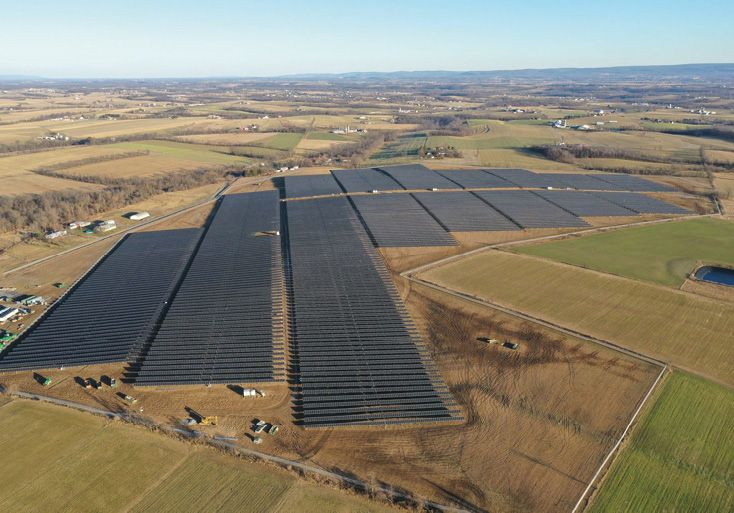Polish PV project permitting, decided on the basis of conditions of development (decyzja o warunkach zabudowy), has long been relatively simple for developers to attain. However, a proposed new system would require developers to pass a local spatial development plan, which could be a considerably longer process.
According to the new law, change-of-land-use permission for solar plants would be offered only on the basis of local spatial development plans, for all arrays located on the most fertile, class I to class III agricultural land, or on forest land. The regime would also apply to arrays larger than 150 kW on less fertile, class IV agricultural land, and for projects larger than 1 MW on any other type of land. The size stipulation would be flexible for sites intended for business power production.
The recent draft legislation would offer developers the chance to secure permission before local plans are finalized, before Jan. 1, 2026. While previous planning decisions would remain valid indefinitely, those issued after the new law came into force would only be valid for five years.
Grid measures
On July 31, the lower house of the Polish parliament and the Senate prepared an amendment to the Energy Act which would oblige large electricity retailers to offer dynamic pricing, in line with EU regulation. The statute is now awaiting presidential sign-off.
With solar projects held up by grid capacity shortages, the legislation would also relax the rules governing generators installing direct transmission to electricity consumers, without using the grid. The Energy Act already allows direct lines, the key proposed change is a waiving of the obligation to obtain a permit from the President of the Energy Regulatory Office to build such a line. That permit requirement effectively blocks such projects because it may be issued only if the energy customer has no option of receiving electricity from the public grid.
The legislation would liberalize the construction of such direct lines and set out specific requirements. First, electricity could be supplied only from a separate production unit, that is, from a unit that has a total output going to one consumer. It would, therefore, be impossible to connect 25% of a PV plant’s nominal power output to the grid and supply the remaining power directly to a dedicated consumer. Secondly, all of the electricity supplied would have to be consumed by a dedicated consumer, that is, a user that is not connected to the power grid or is connected in a way that prevents the feeding of electricity produced at the third-party production site, to the grid. The amended statute would, however, allow the feed of excess electricity not consumed by the dedicated consumer into the grid. Any such arrangement would have to be agreed with the grid operator.
The new law would impose charges on grid-connected energy consumers for using electricity supplied via a direct line from a generator, with the fee payable to the local grid operator. The fee would not apply to customers who are not connected to the public grid and who create a type of “power island” together with the generator.
With such off-grid direct lines expected to be rare, it is anticipated most energy consumers that establish a line to a dedicated generator would have to pay the, so-called “solidarity fee,” which the statute would require to be calculated on the basis of the quantity of power supplied via the direct line. The charge would be meant to cover the maintenance costs of grid system-quality standards and ensuring the reliability of ongoing power supply. In other words, the consumer’s share of the fixed costs of transmission and distribution of grid electricity. The solidarity fee would be calculated by local grid operators.
Cable pooling
Another approach to enable the connection of new clean energy plants to the grid without waiting for infrastructure upgrades is also worth mentioning. This is cable pooling: adding new renewables sites to the grid via existing connections.
The Senate has proposed such an option by adding a comprehensive legislative amendment to this effect, to the bill amending the Renewable Energy Sources Act and Certain Other Acts. Cable pooling is about sharing a connection between more than one generation site. Such pooling makes sense for plants with different production profiles, especially PV projects sharing connections with wind farms, as they often produce electricity at different times of the day and neither uses their full connection capacity most of the time. Cable pooling will rely on physical security measures to prevent overuse of any connection capacity assigned. The cable pooling amendment put forward by the Senate is yet to be approved by parliament.
Last but not least, the trade in PV projects in Poland shows no sign of slowing down. The market is getting more and more professional. Buyers and project developers are increasingly seeking business partners on industry portals and classified advertisement websites.
 About the author: Piotr Mrowiec is an associate partner at Rödl & Partner. He is head of the office in Gdansk, Poland and leader of the renewables team. As a specialist in renewable energy regulation, he advises numerous clients and conducts legal due diligence for PV and wind projects. Mrowiec has also been involved in studies for dozens of solar and wind projects.
About the author: Piotr Mrowiec is an associate partner at Rödl & Partner. He is head of the office in Gdansk, Poland and leader of the renewables team. As a specialist in renewable energy regulation, he advises numerous clients and conducts legal due diligence for PV and wind projects. Mrowiec has also been involved in studies for dozens of solar and wind projects.
The views and opinions expressed in this article are the author’s own, and do not necessarily reflect those held by pv magazine.
This content is protected by copyright and may not be reused. If you want to cooperate with us and would like to reuse some of our content, please contact: editors@pv-magazine.com.



1 comment
By submitting this form you agree to pv magazine using your data for the purposes of publishing your comment.
Your personal data will only be disclosed or otherwise transmitted to third parties for the purposes of spam filtering or if this is necessary for technical maintenance of the website. Any other transfer to third parties will not take place unless this is justified on the basis of applicable data protection regulations or if pv magazine is legally obliged to do so.
You may revoke this consent at any time with effect for the future, in which case your personal data will be deleted immediately. Otherwise, your data will be deleted if pv magazine has processed your request or the purpose of data storage is fulfilled.
Further information on data privacy can be found in our Data Protection Policy.